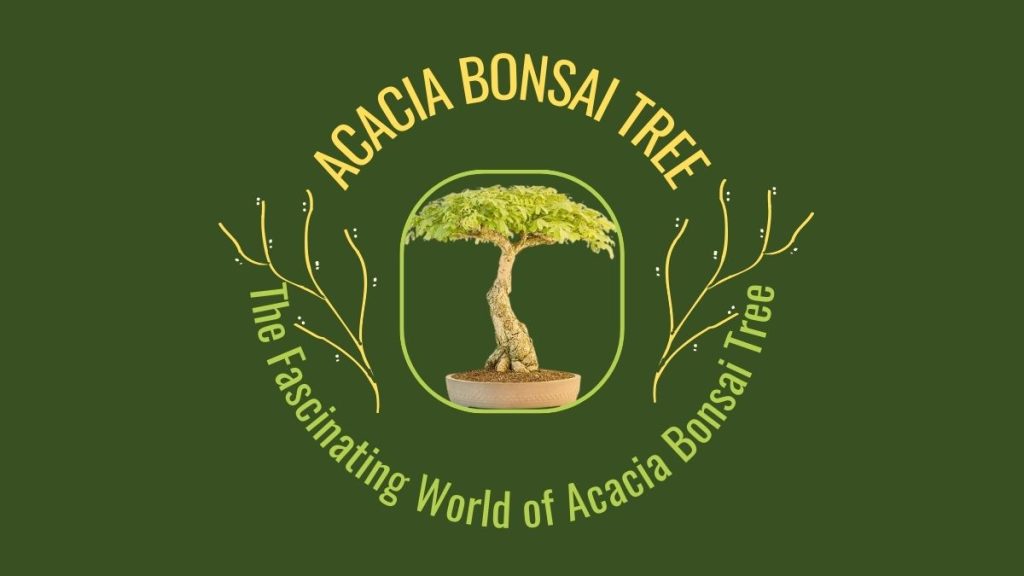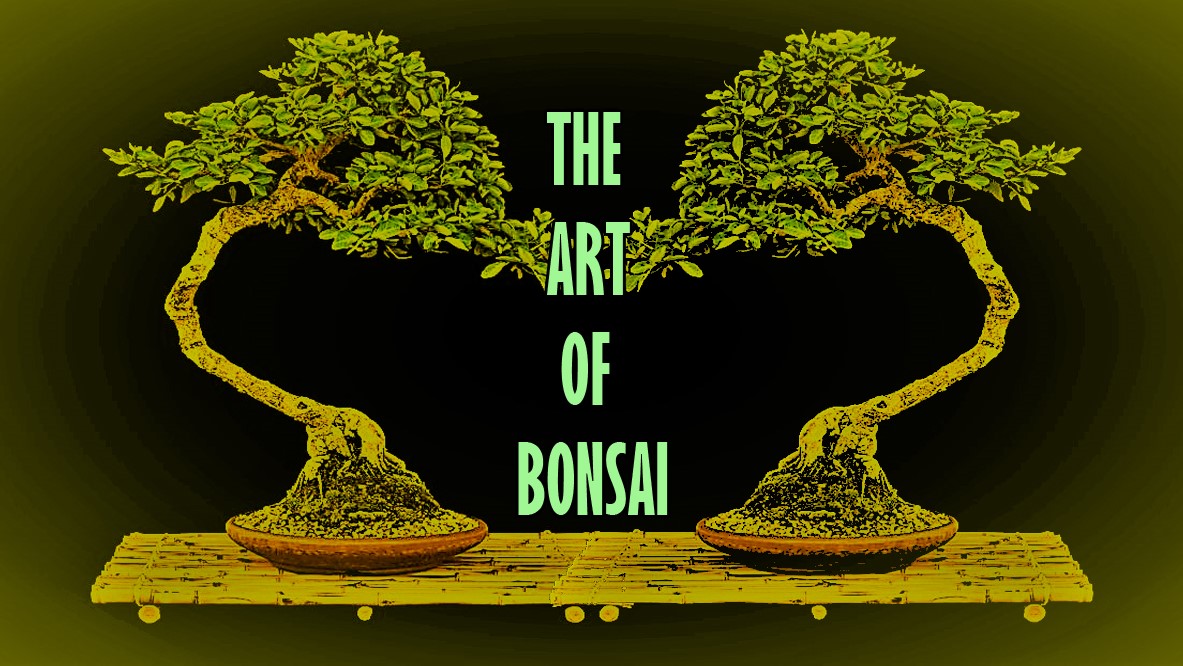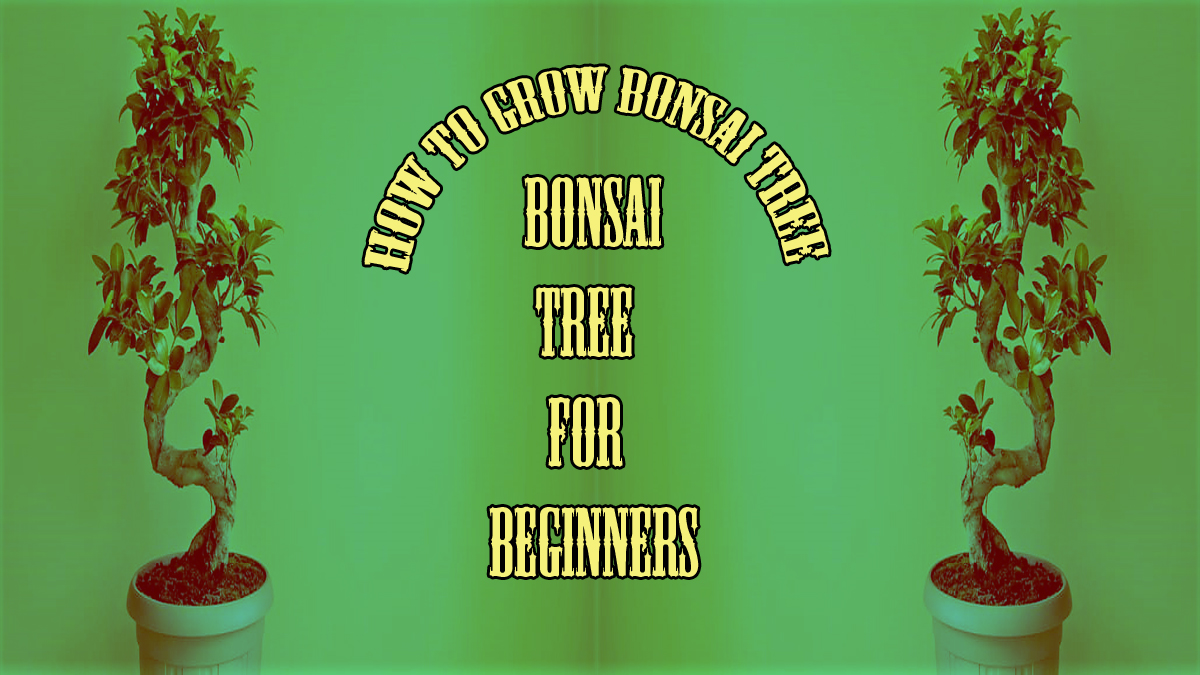In the intricate tapestry of the bonsai world, where each miniature tree tells a story of patience, artistry, and nature’s boundless beauty, the Acacia bonsai tree stands as a testament to elegance and grace. Originating from diverse landscapes spanning Australia, Africa, and the Americas, Acacia bonsai trees have found their place in the hearts of enthusiasts worldwide.
As we embark on this blog journey, we delve into the captivating realm of Acacia bonsai cultivation — uncovering the secrets behind their unique characteristics, exploring the art of nurturing these delicate wonders, and unlocking the styling techniques that transform them into living masterpieces. Join us as we unlock the door to a miniature world of tranquility, where the timeless beauty of Acacia bonsai trees takes center stage.
Indeed, the ancient Japanese art of cultivating miniature trees known as the bonsai has captivated enthusiasts worldwide. Among the diverse species used for bonsai, the Acacia bonsai tree stands out for its unique characteristics and ability to thrive in various environments. In this comprehensive guide, we will explore the fascinating world of Acacia bonsai, covering its origins, characteristics, care requirements, and styling techniques. Hope so, you will enjoy the journey.
Related Article: The Art of Bonsai: Making of Stunning Miniature Trees
You may also read: Are Bonsai Trees Hard to Take Care of? Debunking Myths

Related Article: Bonsai For Beginners: How To Grow Bonsai Tree
You may also read: Ming Aralia Bonsai Trees: A Unique Addition to Your Garden
Exploring the Amazing Acacia Bonsai Tree
Here, we will explore the Acacia Bonsai trees, which would be a great guide for bonsai enthusiasts and a way of knowing this amazing beauty of nature.
Origins and Characteristics:
The Acacia genus comprises over 1,300 species, many of which are native to Australia, Africa, and the Americas. Acacia bonsai trees are known for their finely textured compound leaves, distinctive bipinnate leaf arrangements, and strikingly beautiful flowers. While there are several species suitable for bonsai, Acacia dealbata, commonly known as the Silver Wattle, is a popular choice due to its graceful foliage and vibrant yellow flowers.
Basically, Acacia bonsai trees typically feature a slender, upright trunk that develops an interesting bark texture over time. The branches form delicate, feathery foliage, creating a visually appealing and harmonious composition. The leaves are often small, lending themselves well to the miniature aesthetic of bonsai.
Caring for Acacia Bonsai Tree:
Light and Temperature:
Acacia bonsai trees thrive in full sunlight, making them well-suited for outdoor cultivation. They require at least six hours of direct sunlight each day. While Acacia bonsai trees can tolerate a wide range of temperatures, it’s crucial to protect them from extreme cold. A minimum winter temperature of 41°F (5°C) is recommended.
Watering:
These trees prefer consistently moist but well-draining soil. Watering should be done when the topsoil feels slightly dry. Be cautious not to overwater, as Acacia bonsai trees are susceptible to root rot. Using a humidity tray can help maintain an optimal level of moisture around the tree.
Soil and Fertilization:
A well-draining bonsai soil mix with good aeration is essential for Acacia bonsai trees. Regular fertilization during the growing season, typically spring through autumn, will support healthy growth. Use a balanced, water-soluble fertilizer at half the recommended strength every two weeks.
Pruning and Wiring:
Regular pruning is necessary to maintain the desired shape and size of the Acacia bonsai tree. Pinch back new growth to encourage branching, and remove any unwanted shoots. Wiring can be used to shape the branches, but care must be taken to avoid causing damage to the delicate bark.
Pests and Diseases:
Keep an eye out for common pests such as aphids, spider mites, and scale insects. Regular inspection will help identify and address any issues promptly. Additionally, proper ventilation and spacing between branches can prevent fungal diseases.
Styling Techniques of Acacia Bonsai Tree:
Formal Upright:
Emphasize the natural upright growth habit of Acacia bonsai trees by maintaining a straight, vertical trunk with evenly spaced branches.
Informal Upright:
Create a more natural and asymmetrical appearance by allowing the trunk to exhibit gentle curves, and position branches in a more irregular fashion.
Slanting Style:
In the slanting style, the trunk is tilted to one side, creating a dynamic and visually interesting composition.
Cascade Style:
Mimic is the appearance of a tree growing on a cliff by allowing the branches to cascade downward. This style imparts a sense of age and drama.
Fascinating Facts about Acacia Bonsai Tree:
Here are some fascinating facts that make the world of Acacia bonsai trees amazing:
Floral Splendor:
One of the standout features of Acacia bonsai trees is their breathtaking floral display. Depending on the species, these miniature marvels produce vibrant, spherical clusters of flowers that range from golden yellows to creamy whites. The delicate and aromatic blossoms add an extra layer of visual appeal, making Acacia bonsai trees a joy to behold when in bloom.
Seasonal Changes:
Acacia bonsai trees undergo seasonal changes that add to their allure. During the growing season, the feathery foliage creates a lush canopy, while in winter, the bare branches and intricate bark patterns become more pronounced. This natural ebb and flow contributes to the tree’s dynamic beauty and provides bonsai enthusiasts with year-round interest.
Adaptability:
Acacia bonsai trees showcase a remarkable adaptability to different environmental conditions. While they thrive in full sunlight, they are known to tolerate a range of climates. Indeed, this adaptability makes them suitable for bonsai enthusiasts worldwide, from humid subtropical regions to drier, arid climates.
Symbolism and Cultural Significance:
In addition to their aesthetic appeal, Acacia bonsai trees carry cultural and symbolic significance. In some cultures, Acacia trees are associated with endurance, resilience, and the ability to thrive in challenging conditions. Incorporating these symbolic meanings into the art of bonsai adds depth and significance to the cultivation of Acacia bonsai trees.
Species Variety:
The Acacia genus is incredibly diverse, offering a plethora of species suitable for bonsai cultivation. Bonsai enthusiasts can choose from a range of Acacia species, each with its unique characteristics. Acacia dealbata, Acacia baileyana, and Acacia tortilis are just a few examples that showcase the diversity within the Acacia genus.
Aromatic Qualities:
Some Acacia species are popular for their aromatic qualities, emitting a pleasant fragrance from their foliage and flowers. Basically, this aromatic dimension enhances the sensory experience of cultivating and appreciating Acacia bonsai trees, making them a multisensory delight for enthusiasts.
Historical Significance:
Acacia trees have a rich history, with some species having been used traditionally for medicinal purposes, woodworking, and even as a source of gum Arabic. Understanding the historical context of Acacia trees adds depth to the appreciation of these bonsai specimens.
By considering these additional facets of Acacia bonsai trees, enthusiasts can deepen their understanding and connection to these captivating miniature wonders, turning the cultivation of these trees into a truly enriching and rewarding experience.
To know more about Acacia Bonsai Tree, Go Here>>>
Related Article: The Top 10 Best Bonsai Trees for Beginners
You may also read: Best Bonsai Pots: Elevate Your Miniature Trees with Style
Final Thoughts
Cultivating an Acacia bonsai tree is a rewarding journey that requires patience, skill, and a deep appreciation for the art of bonsai. By understanding the unique characteristics of Acacia trees and following proper care and styling techniques, enthusiasts can create stunning miniature representations of these remarkable species. Whether displayed indoors or outdoors, an Acacia bonsai tree is sure to captivate onlookers with its elegance and charm, embodying the essence of nature in a small yet enchanting form.
Related Article: 14 Best Bonsai Tools To Make A Proper Bonsai
You may also read: The 7 Best Bonsai Watering Cans Effective For Nurturing Bonsai
- DIY Room Decor Ideas: Transform Your Space on a Budget - May 16, 2025
- Landscape Ideas for Front of House Low Maintenance: Effortless Curb Appeal - March 21, 2025
- Patio Garden Ideas: Transform Your Outdoor Oasis - January 19, 2025




Amazing…Acacia Bonsai is outstanding.👍👍👍
Thanks for being with us. Stay tuned.
Pingback: Ming Aralia Bonsai Trees: A Unique Addition to Your Garden - Dwell Gardens
Pingback: The Art of Bonsai: Making of Stunning Miniature Trees - Dwell Gardens
Pingback: 14 Best Bonsai Tools To Make A Proper Bonsai - Dwell Gardens
Pingback: Bonsai For Beginners: How To Grow Bonsai Tree - Dwell Gardens
Pingback: The 7 Best Bonsai Watering Cans Effective For Nurturing Bonsai - Dwell Gardens